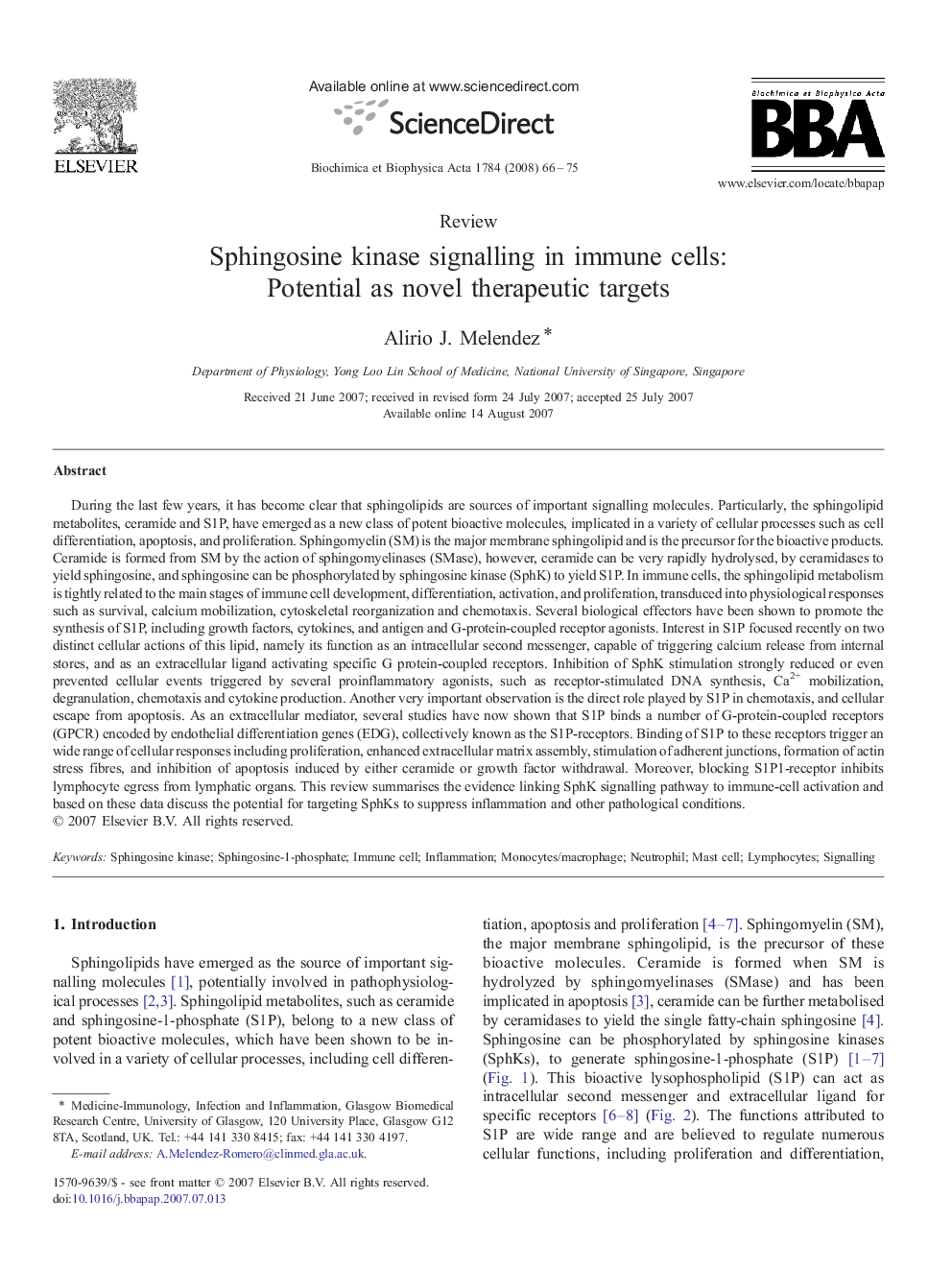| کد مقاله | کد نشریه | سال انتشار | مقاله انگلیسی | نسخه تمام متن |
|---|---|---|---|---|
| 1179307 | 962769 | 2008 | 10 صفحه PDF | دانلود رایگان |

During the last few years, it has become clear that sphingolipids are sources of important signalling molecules. Particularly, the sphingolipid metabolites, ceramide and S1P, have emerged as a new class of potent bioactive molecules, implicated in a variety of cellular processes such as cell differentiation, apoptosis, and proliferation. Sphingomyelin (SM) is the major membrane sphingolipid and is the precursor for the bioactive products. Ceramide is formed from SM by the action of sphingomyelinases (SMase), however, ceramide can be very rapidly hydrolysed, by ceramidases to yield sphingosine, and sphingosine can be phosphorylated by sphingosine kinase (SphK) to yield S1P. In immune cells, the sphingolipid metabolism is tightly related to the main stages of immune cell development, differentiation, activation, and proliferation, transduced into physiological responses such as survival, calcium mobilization, cytoskeletal reorganization and chemotaxis.Several biological effectors have been shown to promote the synthesis of S1P, including growth factors, cytokines, and antigen and G-protein-coupled receptor agonists. Interest in S1P focused recently on two distinct cellular actions of this lipid, namely its function as an intracellular second messenger, capable of triggering calcium release from internal stores, and as an extracellular ligand activating specific G protein-coupled receptors. Inhibition of SphK stimulation strongly reduced or even prevented cellular events triggered by several proinflammatory agonists, such as receptor-stimulated DNA synthesis, Ca2+ mobilization, degranulation, chemotaxis and cytokine production. Another very important observation is the direct role played by S1P in chemotaxis, and cellular escape from apoptosis. As an extracellular mediator, several studies have now shown that S1P binds a number of G-protein-coupled receptors (GPCR) encoded by endothelial differentiation genes (EDG), collectively known as the S1P-receptors. Binding of S1P to these receptors trigger an wide range of cellular responses including proliferation, enhanced extracellular matrix assembly, stimulation of adherent junctions, formation of actin stress fibres, and inhibition of apoptosis induced by either ceramide or growth factor withdrawal. Moreover, blocking S1P1-receptor inhibits lymphocyte egress from lymphatic organs. This review summarises the evidence linking SphK signalling pathway to immune-cell activation and based on these data discuss the potential for targeting SphKs to suppress inflammation and other pathological conditions.
Journal: Biochimica et Biophysica Acta (BBA) - Proteins and Proteomics - Volume 1784, Issue 1, January 2008, Pages 66–75